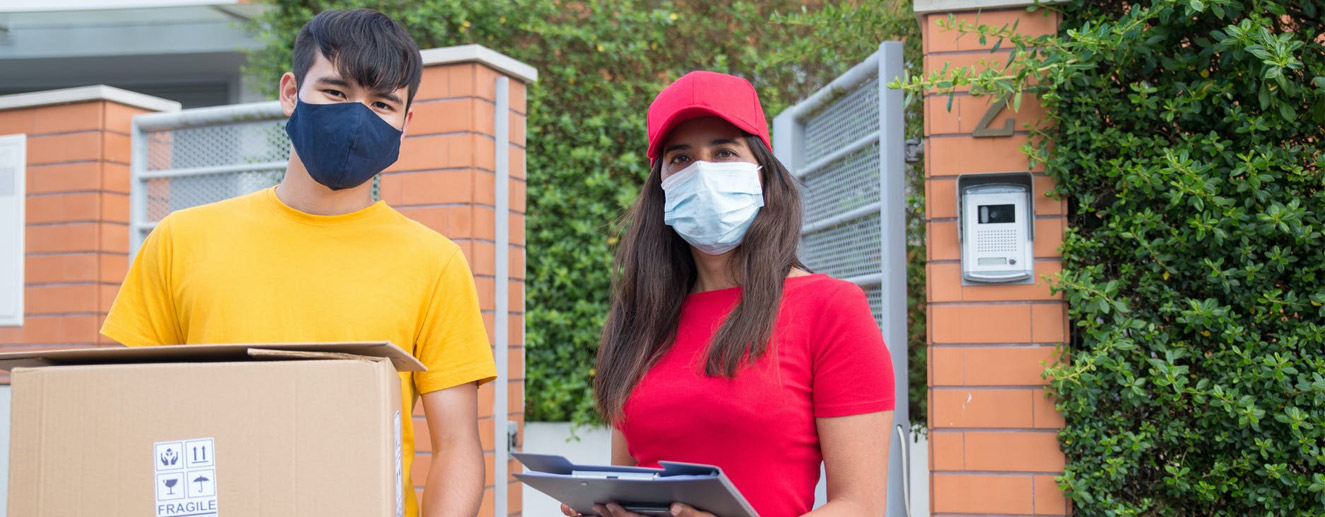Last-mile delivery might sound simple, but it is actually the most difficult step of the whole shipping process. The rapid growth of the eCommerce industry (accelerated due to the pandemic), has increased demand for flexible, fast, traceable, and personalized last-mile delivery. That is why it is imperative to devise a seamless operation so last-mile deliveries are executed successfully.
Here are a few tips to keep in mind:
Find the right delivery partner
Most retailers don’t specialize in the actual delivery of the products they offer – it is passed on via a partnership with a shipping provider or even a postal service. Take your time to research any company you consider partnering with. Find out if they specialize in a particular sector, the markets they cater to, specific last mile solutions provided, and of course, the technological solutions they bring to the table. For instance, does the delivery service offer easy technology integration? If not, you might want to look elsewhere. The delivery partner should meet your business’ needs and customer expectations.
Invest in visibility
Make sure you use a last-mile software that comes with effective tracking capabilities – it lets you spot problems right away and resolve them proactively. Gaining visibility on shipments, drivers, and delivery vehicles via GPS tracking allows fleet managers to act quickly and decisively when unexpected scenarios crop up. Last-mile tracking also proves a key selling point for customers who appreciate knowing about the ETA of their shipment, along with driver location. Being aware of the ETA ensures they are present to receive it, which means the possibilities of failed deliveries is reduced. Moreover, the customer service team doesn’t have to field calls from angry customers demanding to know why their shipment is getting delayed!
Optimize routes
No one relies on manual route planning anymore! Using route optimization software helps to map out the fastest and most cost-effective routes between two points within minutes while accounting for real-time variables too. Having drivers spend less time in traffic or preventing them from traversing unnecessarily long routes means real cost savings in the form of reduced fuel expenses and vehicle maintenance costs. Moreover, shorter and more accurate routes mean company resources aren’t wasted. Route optimization also allows businesses to handle on-demand deliveries or accommodate last-minute changes and adjustments.
Offer personalization of delivery
Most people are familiar with how Amazon has revolutionized last-mile deliveries with the same-day delivery offer for its Prime customers. But it is worth bearing in mind that a majority of customers think they will get same-day delivery, whenever they see “fast delivery” mentioned. However, delivery personalization takes it to a whole other level. While speedy delivery is vital, so is convenience. Retailers that want to provide outstanding last-mile delivery should factor in same-day delivery, chosen time delivery, or perhaps local pickup delivery, where the customer picks up their shipment from a parcel locker in their vicinity. The greater the personalization of last-mile delivery choices, the more likely are customers to be happy.
Reduce last mile distance
As we all know, the last mile is the journey from a fulfillment center or warehouse to the end-user – its actual distance is typically much longer than a simple journey from point A to B. Reducing distances in the actual last mile distance could result in greater efficiencies and lower costs significantly. One way to achieve this is to use retail outlets as distribution centers, especially in areas with big customer bases. Those who conduct business online and at brick-and-mortar stores will find it convenient to do so. Even purely eCommerce retailers have the option of renting out spaces and using them to minimize last mile distances in areas where their products are particularly popular.
Last-mile delivery is one of the most important stages in the delivery process, but complex logistics and inefficient operations can cut into profits, hamper credibility, and lead to customer dissatisfaction. These practical tips will help to streamline the last mile process, so you can execute successful deliveries without hassle.

 Global
Global Australia
Australia India
India




